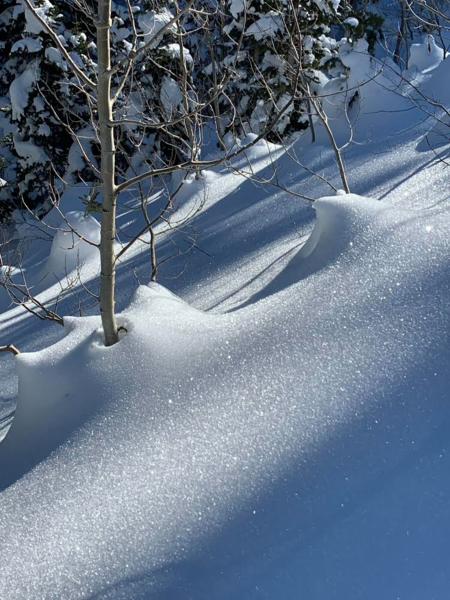The gradual consolidation of snow.
Settlement is the slow process of snow consolidating either due to gravitational forces rearranging the grains or as a result of rounding metamorphism. In both cases the snow becomes stronger and denser. Settlement typically occurs fairly quickly in new snow. For instance, a storm could drop a foot of very low density powder, and, by the next day, that same amount of snow might have settled to only a few inches. Rapid settlement in new snow can occasionally cause unstable conditions if fluffy, harmless powder settles into a more cohesive soft slab. This change may be expedited by warming temperatures. Although rapid settlement can form slabs and lead to temporary instabilities in new snow, snowpack settlement generally leads to a stronger, more stable snowpack. Weak layers of faceted snow and surface hoar are more resistant to settlement. Settlement is a very different and much slower process than a collapse or whumpf in the snowpack.


